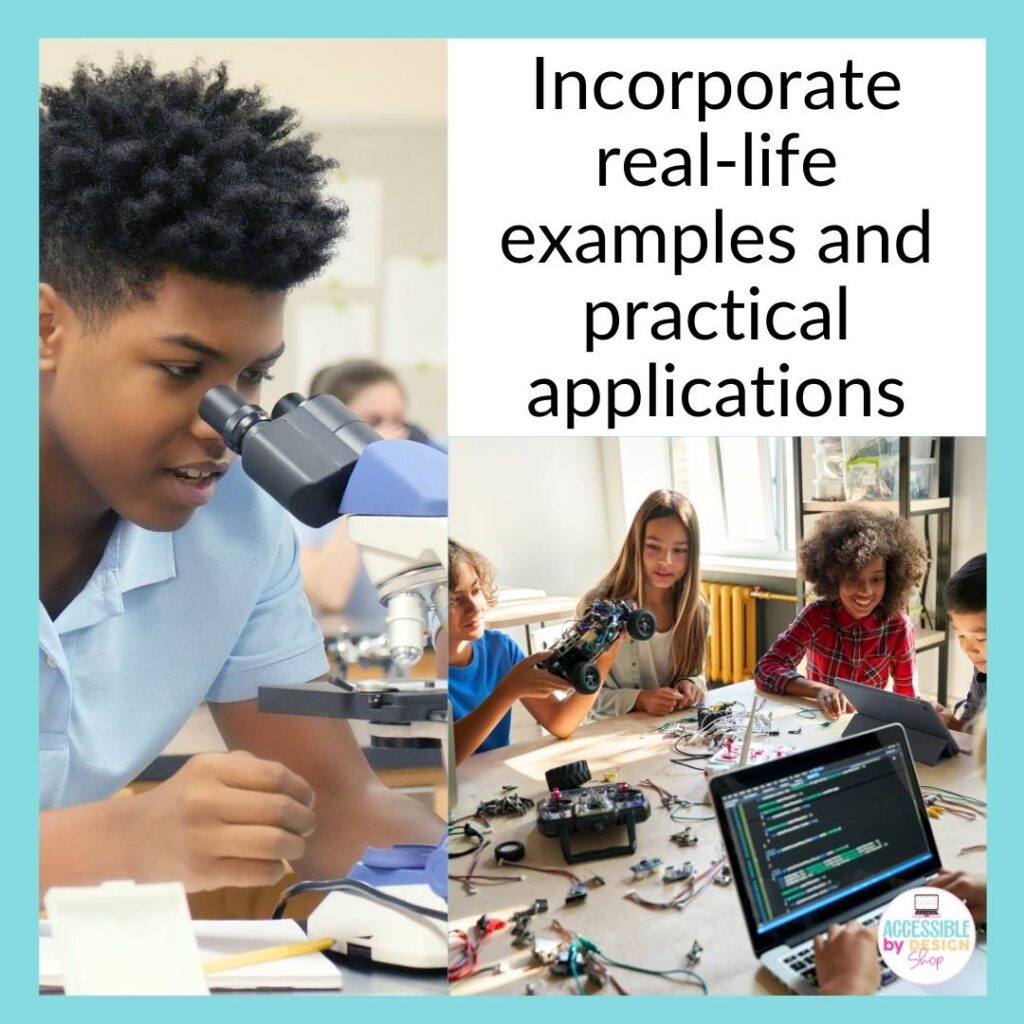How to Ensure Accessibility in Science for Students with Disabilities
Science is a subject that is often a challenge for students because of its dense material and reliance on a practically new vocabulary. So it is important to ensure science for students with disabilities is as accessible as possible.
And this can be done with a few careful considerations that focus on implementing inclusive practices and utilizing assistive technologies. Keep reading for some tips and best practices to make science education accessible and meaningful for secondary students with disabilities.

Tips to improve accessibility in science
There is a diverse range of disabilities and, as a result, their potential impact on science learning is also diverse. However, students with disabilities face some common barriers and challenges in science education and teachers can address these to improve accessibility in science classes.
Adapting Science Curricula and Materials
Accommodating and modifying curriculum and content is one of the most impactful options for making a science class more inclusive. Here are six ways that you can adapt curriculum and learning materials in science for students with disabilities.
1. Consider how you can modify content to align with student abilities such as reducing the number of assignments or questions for in-class practice. This process is similar to chunking material and can apply to task completion as well as reading.
2. Examine the number of tasks required for an activity or assignment and organize these into smaller pieces where students are provided some of the requirements rather than everything at once. Or evaluate the length and content of a reading task to see what you can omit and still provide the necessary information for the student’s understanding.

3. When modifying the requirements for an assignment you could include material from a different grade level that is more appropriate for the student(s).
4. Another option is to shift the type of assignments that students complete.
- Can a student deliver an oral presentation rather than a written essay?
- Can a student be observed doing a hands-on lab rather than completing a lab report?
5. Beyond modification, accommodations are the next step toward success. Tweaks to language and format such as reducing the number of questions on a page can help with students’ focus, engagement, and knowledge retention.
6. Another option is to include adapted books for special education. By design, adapted books are more accessible in order to meet the needs of a variety of learners. Adapted books seek to remove the barriers that exist for many students to access engaging and appropriate books.
Adapted books might include tactile elements, simplified text, visual supports, or interactive features.
If you’re teaching biology, this Genetics and Hereditary Adapted Book would be ideal to meet secondary science standards! Your students will learn about biology, genetics, traits, and heredity with this accessible digital reader. This digital reader provides students with simple text paired with age-appropriate visuals in an interactive format.
For more information about adapted books for special education check out this post.
Incorporating Real-life Examples and Practical Applications
Using visuals such as diagrams and images, auditory supports such as recordings or verbal explanations, along with tactile materials and manipulatives can take a lesson from a zero to a hero!

For example, these Genetics and Hereditary Worksheets meet secondary science standards but are more accessible. Students can learn about genes, genetics, heredity, The Human Genome Project, and DNA in a hands-on way since these resources provide opportunities to cut and paste or circle items or even to color. With simplified language and heavy use of visuals, this set of 13 worksheets is a great addition to biology and genetics lessons.
Creating Accessible Science Learning Environments
While content in science is important so too is the environment in which students are learning. Physical accessibility must also be a consideration in the science classroom.
What signage is present in the classroom? Can it be updated to include a larger font or more high contrast?

What is the desk set up in the classroom? Focus on including flexible seating options as well as wider aisles for moving throughout the room. Take time to reduce clutter to ensure physical movement is unobstructed.
Where are materials stored and accessed by students? Evaluate the systems in place to ensure that all students can access what is necessary for their learning in class.
Final Takeaway
Increasing the accessibility in science for students with disabilities is essential. Using the tips in this post to reflect the requirements of students’ IEPs can improve students’ knowledge and understanding of the subject, as well as encourage their engagement in their own learning. With all of this in mind, success is possible in science (or any subject) when inclusive practices and assistive technologies are at the fore of the planning process for teachers.
Want to get your hands on more FREE resources to increase accessibility in your classes? Click to join the Accessible by Design Shop email list!






